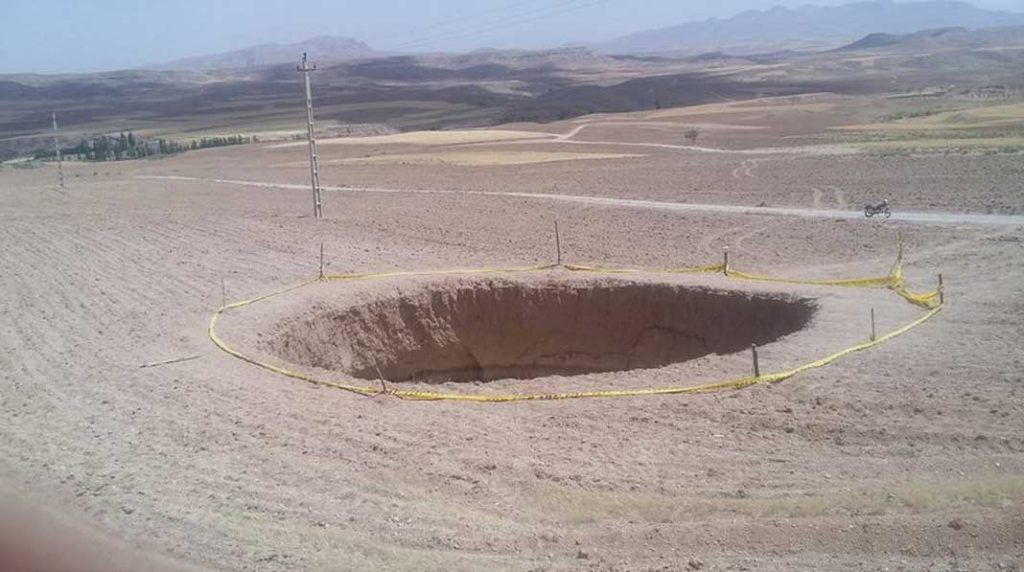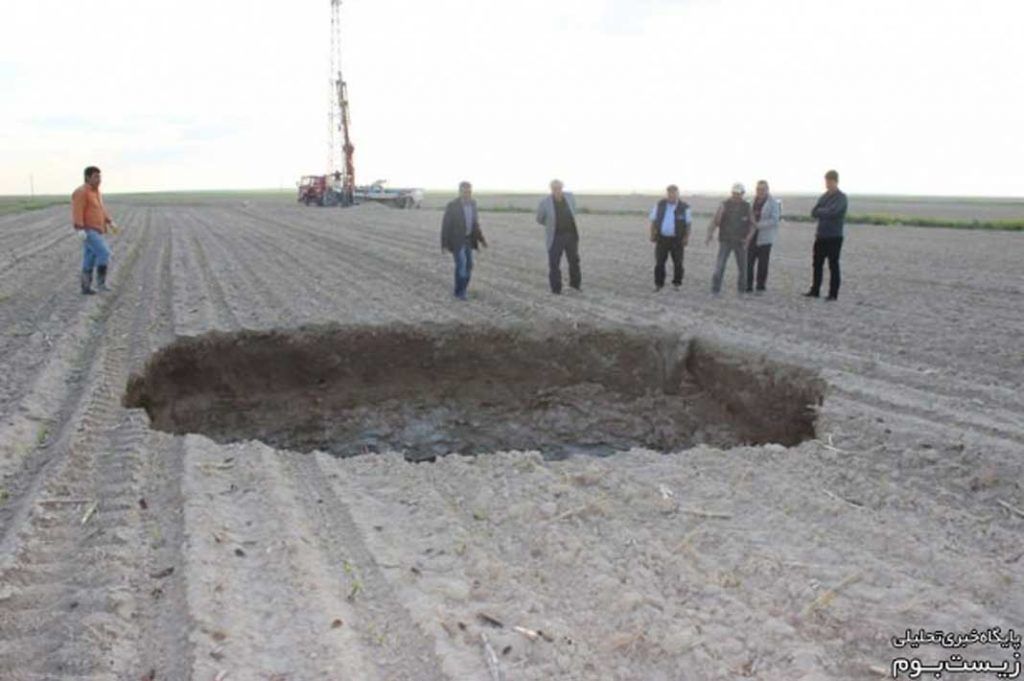Thursday, September 15, 2016
A vast area of the country is facing water shortage and drought. The inhabitants of the southern half of the country, particularly those living in small towns and villages around Iran’s [Lut] desert, are wondering if rain would ever fall again on their land. The water crisis is threatening the financial and physical welfare of the local population. There are a number of major obstacles including budgetary concerns, management [problems] and social and cultural issues that block any attempt to tackle this crisis.
Last month, police entered a farm, bringing with them a front-loader to fill a well that had been dug without proper authorisation. The desperate protest and cries by the farmer and his family were heart-wrenching. Filling the well results in the destruction of the farm and the financial ruins of a number of families. Police must uphold the law, and of course it is up to the police officers and soldiers to enforce the law.
In utter desperation, the farmer had started hitting himself in the face with rocks and stones, hoping that injuring himself would somehow stop the police from filling the well. Realising that he had failed to dissuade the police, the farmer had thrown himself in the well.
Digging wells without proper permit is one of the reasons that the groundwater reservoirs dry up. But what is a farmer — who has no water on his land — supposed to do? This crisis is part of a much larger social and cultural problem which cannot be addressed through a one-sided approach.
A few kilometres away, dried up springs and exhausted groundwater reservoirs are threatening the security and the existence of dozens of villagers. How? The land is sinking, creating massive cavities in the ground — called sinkholes — on farmlands and orchards, some of which are tens of meters deep. In one instance, drought and illegally dug wells caused the formation of a massive sinkhole on a pomegranate orchard in the town of Fasa in Fars Province. It measured 500 square meter in diameter and was 100 meter deep.
As a rule, seven sinkholes in one area spells disaster for the residents.
Speaking at the national conference on water economy on 4 August 2016, Iran’s energy minister, Mahmud Chitchian, said that the world water consumption will increase by 40% by the year 2030. He warned: “the current water problem in the country threatens the survival of the nation and Iranian civilisation”.
According to a recent report by a research team from the Max Plank Institute [for chemistry], “by 2050 the Middle East and North Africa could become so hot that it will be impossible for any humans to live there”. NASA released a similar report last year, saying that “in the next 30 years, global warming will threaten 40 countries with severe drought. Iran is in the fourth place on the list.”
Tribal fights over water
There has been a marked increase in tribal fights over water in the past ten years in Iran. During the month of July 2016, residents of Boldaji village in Chaharmahal and Bakhtiari Province clashed with the police during a protest over a project that involved transferring water to the city of Borujen. Rocks and wooden clubs had been thrown and guns fired, resulting in the death of a 32 year old man. Another 180 people had been injured.The local residents believe that the project will destroy farming and the villages in the area.
The biggest fight over water took place four years ago in the city of Varzaneh in Esfahan Province. A number of farmers objected to the transfer of water from Zayanderud [the largest river of the Iranian Plateau in central Iran] to Yazd Province. The protesters clashed with the police which resulted in dozens of arrests.
Ahmad Reza Pourdastan, commander of the army ground forces, has, on numerous occasions in recent years, warned that the future wars in the Middle East will not be fought over oil but over water reservoirs. Experts and researchers have been issuing the same warning at various international conference since early 1990s. But in a region already embroiled in conflict and turmoil, this prediction could become a bitter truth and spell death and destruction. The paramilitary forces fighting in Iraq and Syria are also clashing over water. And domestic disputes inside Iran could signal the start of a crisis which might overshadow all other problems.
[responsivevoice_button voice=”US English Female” buttontext=”Listen to this “]



